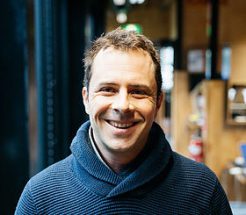
One only ever really understands the depth and shape of one’s weaknesses when they are exposed by an outside force. As individuals, households and communities, our respective weaknesses are currently being exposed in a manner very few of us alive today could have imagined, writes Stu Speirs.

When our vulnerabilities are exposed, the initial reaction is generally one that resorts to rapid protection of self. Whilst understandable, being wholly immersed in the immediate rush of self-preservation and waiting for the storm to pass before embarking upon reflection, risks us losing the opportunity to learn in the moment.
Whilst objectivity and clarity in the heat of the moment may be difficult to achieve, any insights gained via reflection in the thick of it would likely be of enormous value for the planning of a community’s future. Further to that, what we are facing today is a threat of such magnitude, that once it has passed, there will likely be a collective form of Post-Traumatic Stress Disorder that will limit our want and ability to do the necessary reflection to assist in our future planning.
So as a practitioner in the world of Place Branding and Identity, the question that has posed itself since the onset of the summer’s bushfires and now in the midst of a global pandemic, is the role a galvanised sense of place has to play in the collective resilience of our communities.
Whether it be resilience as defined by the UN, the International Federation of the Red Cross and Red Crescent, or the Rockerfeller Foundation’s 100 Resilient Cities program, a critical component of any community’s resilience will be a sense of social cohesion and collective identity. So, for the place branding community, our roll in the midst of this episode is clear.
- Communicate in both formal (facilitated) and informal ways with colleagues that deal with resilience planning and disaster recovery. Let us ask about their world, and let them know about ours. The cross-over between the two is clear, now is the time to come together and pool our resources.
- Question the extent to which we have taken time to identify and articulate our collective identity as a community. If you’ve got a good grasp of it, then reflect on how the reaction to this event has measured up against who your community thinks they are. If you’re not that sure of your community’s collective self, use this period to identify the common values your community prides itself on that sit at the heart of your reaction to this pandemic event.
- Take time to review and articulate in your own unique way, why a certain value is something that your community prides itself on. Nigh on every single place in Australia would describe itself using values such as “Inclusive”, “Diverse” and “Friendly”. Having one or more of those as core values is fine, but what is key is telling a story as to why that value makes sense in your community. How is your version of that value different to anywhere else?
Stu Speirs is the curator and MC of Place Branding Australia. The 2020 event that was to be held in Hobart will be postponed to align with Dark Mofo 2021. In the meantime, an online version of the event to be held in the weeks ahead is currently being programmed. If you have any interest in participating as a speaker please contact Stu Speirs directly at stu@silverliningstrategy.com.au, if you’d like to register your interest in attending the online event, please do so here: events@intermedia.com.au
Comment below to have your say on this story.
If you have a news story or tip-off, get in touch at editorial@governmentnews.com.au.
Sign up to the Government News newsletter